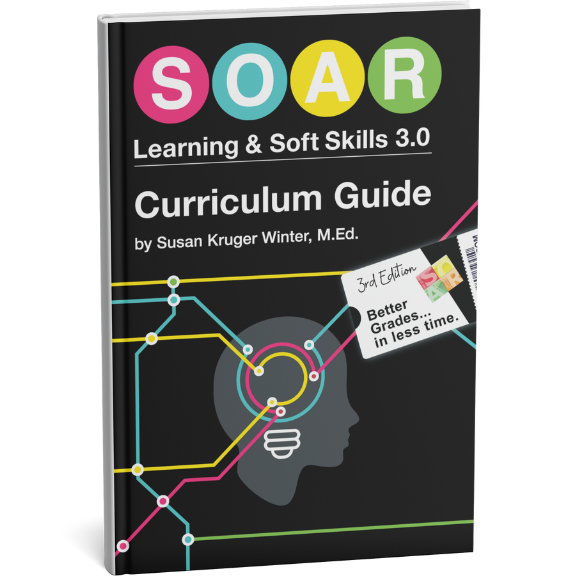The Fundamental Learning Strategy: Are You Exploiting It for All of Its Potential?
I would like to share another perspective about how the brain works. This one, in my opinion, is FUNDAMENTAL. It applies universally to everything you learn.
If you really understand this, you can find unlimited applications to improve your learning (and teaching). You are undoubtedly aware of it to some extent, but are you exploiting it for all of its potential?
The concept is CONNECTIONS.Everything you have ever learned in your life, you have learned because your brain was able to connect the new information to something it already understood.
If you have ever had the sense that something was “over your head,” that was your brain NOT being able to establish a connection.
If you have experienced the feeling when something finally “clicked,” that was the connection taking hold.
Memory techniques such as mnemonics (I live in the Great Lake State of Michigan, so we use the word “HOMES” to remember the five great lakes) and associations (linking pictures to ideas or objects) work because they forge connections.
When you memorize something by rehearsing it over and over again, then forget it quickly (like the minute you turn your test in, or worse, the minute you get your test), your brain has failed to make a solid connection.
Instead, your brain stored that rehearsed information in your short-term memory, but lacked the connection to transfer it to long-term memory.
When you make a connection, you change the physical make-up of your brain! Electrical impulses firing within your brain are actually connecting as YOU are making connections. To see this process, take a look at this short video (1:24) of neuron connections in the brain: http://www.youtube.com/watch?v=FZ3401XVYww; the process of making connections is to learning as weight-lifting is to building muscle.
How do you apply this to learning?
Opportunities for making connections are limited only by your imagination! A very powerful strategy I teach to students is to maximize the use of visuals in a textbook by “reading” those first, before the black-and-white text.
As they look at each picture, graph, or illustration, and read the captions, they should be asking themselves “Why do I think this picture is here?” This question forces them to make a connection with the topic of the text… and that does wonders for increasing reading comprehension!
Long before I knew what I was doing, I once studied for a high school Government test by creating a silly story with a friend that had something to do with Benjamin Franklin eating Philadelphia Cream Cheese. I made associations to help me remember the chain of events leading up to the signing of the Declaration of Independence; I made connections!
To learn the meaning of new vocabulary words from a chapter, create a concept map.
- Put the topic of the chapter in the center of a piece of paper.
- Then, pick the first word from your list and write it on the map.
- Draw a line between this word and the topic in the center.
- Write a sentence connecting the two items together.
- Repeat with the remaining words, drawing connections to the topic in the middle.
- Then, draw as many connections as you can between all of the words.
This map will get messy, but your understanding of the topic and the new terms will become crystal clear! Forget about memorizing and rehearsing…this is purely about learning!
I would like to issue a challenge to you this week…make a deliberate attempt to learn something new by making a connection. Of course, the only way you would learn anything is through developing a connection, but become more deliberate about them this week.
-Susan Kruger
EB 090817
Six Steps
Conquer the Chaos
Get Our Free Guide & Information on...

"*" indicates required fields
Get Our FREE Curriculum Guide!
The SOAR® Curriculum
The most critical learning, organizing, and communication skills needed for school. Learn more here.
Who’s Using SOAR®?
SOAR® Guarantee
Click here to learn more.




